#The Isabella Stewart Gardner Museum Theft
Explore tagged Tumblr posts
Text
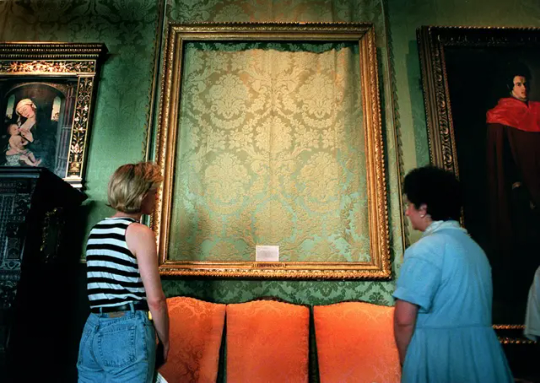
The Isabella Stewart Gardner Museum Theft
Five things you probably didn’t know about the biggest art heist in history
Most art galleries and museums are famous for the art they contain. London’s National Gallery has Van Gogh’s “Sunflowers”; “The Starry Night” meanwhile, is held at The Museum of Modern Art in New York, in good company alongside Salvador Dalì’s melting clocks, Andy Warhol’s soup cans and Frida Kahlo’s self-portrait.
The Isabella Stewart Gardner Museum in Boston, however, is now more famous for the artwork that is not there, or at least, that is no longer there.
On March 18 1990 the museum fell prey to history’s biggest art heist. Thirteen works of art estimated to be worth over half a billion dollars — including three Rembrandts and a Vermeer — were stolen in the middle of the night, while the two security guards sat in the basement bound in duct tape.
The robbery is a treasure trove of surprising facts and unexpected plot twists. Here are five things that make the Isabella Stewart Gardner Museum, and its famous theft, so interesting.

The woman behind the building:
Isabella Stewart Gardner, the museum’s founder and namesake, is a fascinating character. The daughter and eventual widow of two successful businessmen, Gardner was a philanthropist and art collector who built the museum to house her stash.
“When she opened the museum in 1903 she mandated that it be free of charge, to gain the appreciation and the attendance of all of Boston,” Stephan Kurkjian, author of “Master Thieves: The Boston Gangsters Who Pulled Off the World’s Greatest Art Heist”, said in the programme. “Her museum, at that point in time, was the largest collection of art by a private individual in America.”
Gardner also had links to the fledgling campaign for women’s political rights. The museum displays the photographs and letters of her friend Julia Ward Howe, an organizer of two US suffrage societies, and a print of Ethel Smyth, a composer and close friend of the English Suffragette leader Emmeline Pankhurst.
Gardner met Smyth through their mutual friend, the painter John Singer Sargent, whose portrait of Gardener raised eyebrows for the low-cut neckline he gave her.
Gardner seemed to enjoy flirting with scandal and gossip: she once arrived at a Boston Symphony Orchestra performance in a hat band emblazoned with the name of her favorite baseball team, Red Sox, and an illustration in a January 1897 edition of the Boston Globe showed her apparently taking one of Boston Zoo’s lions for a walk.
Somewhat ironically, when the Mona Lisa was stolen in 1911, Gardner told her museum guards that, if they saw anyone trying to rob them, they should shoot to kill.
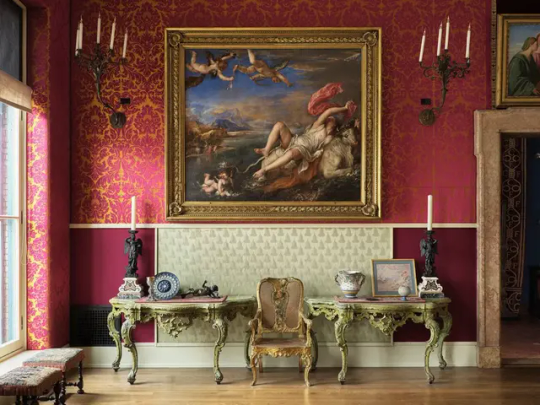
The art not taken:
The thieves’ loot is estimated to be worth over half a billion dollars. However, they left the building’s most expensive artifact: “The Rape of Europa” by Titian, which Gardner bought from a London art gallery in 1896, then a record price for an old master painting.
Why commit history’s greatest art heist and leave without the priciest piece in the museum? Well, size may have played a role. The largest artwork taken was Rembrandt’s “Christ in the Storm on the Sea of Galilee,” famous for being Rembrandt’s only seascape and measures roughly 5x4 feet. “The Rape of Europa,” meanwhile, is larger, at nearly 6x7 feet.
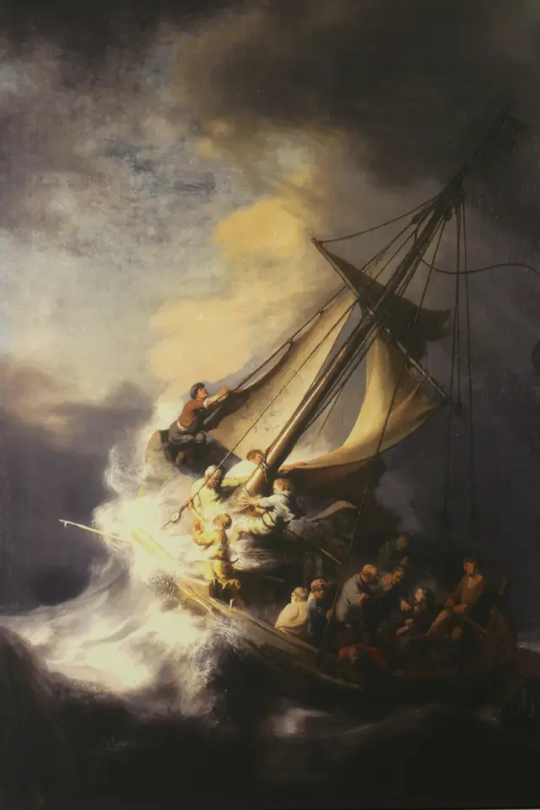
The Napoleon factor:
Around 2005, the investigation into the stolen artworks took a detour to the French island of Corsica in the Meditteranean Sea. Two Frenchmen with alleged ties to the Corsican mob were trying to sell two paintings: a Rembrandt and a Vermeer. Former FBI Special Agent Bob Wittman was involved in a sting to try and buy them — but the operation eventually fell apart when the men were arrested for selling art taken from the Museum of Modern and Contemporary Art in Nice instead.
Why would “Corsican mobsters,” as correspondent Randi Kaye described them in the programme, be interested in robbing a Boston art museum? The answer could lie in the Bronze Eagle Finial, the 10-inch ornament stolen from the top of a Napoleonic flag during the heist.
“It was sort of an odd choice for the thieves to take (the Finial),” Kaye said, “but it turns out that Corsica is essentially the homeland of Napoleon.” The French emperor was born on the island in 1769, and a national museum is now housed in his former family home.
“It is a very compelling notion,” Kelly Horan, Deputy Editor of the Boston Globe, said in the programme, “that a Corsican band of gangsters might have tried to steal back their flag and pull off the entire rest of the heist in the process.”

A rock’n’roll suspect:
March 18 1990 was not the first time a Rembrandt had been stolen from a Boston museum. In 1975, career criminal and art thief Myles Connor walked into Boston’s Museum of Fine Arts, and walked out with a Rembrandt tucked into his oversized coat pocket. He was the FBI’s first suspect in the Gardner case, however the walls of federal prison — where he was incarcerated on drugs charges — gave him a pretty solid alibi.
When he wasn’t lifting famous artworks from their displays, Connor was a musician. It was through gigging that he met Al Dotoli, who worked with stars including Frank Sinatra and Liza Minelli.
In 1976 Connor was jailed for a separate art theft committed in Maine. Hoping to use his stolen Rembrandt to leverage a lesser sentence, he needed Dotoli — who was on tour with Dionne Warwick — to turn the painting in to the authorities on his behalf.

An invisible thief?
One of the stolen artworks, Édouard Manet’s “Chez Tortoni,” was taken from the museum’s Blue Room on the first floor. The painting stands out for two reasons, the first being its frame. The thieves left almost all of the frames behind, cutting some out of the front.
“To even leave remnants of the painting(s) behind was savage,” Horan said. “In my mind, it’s sort of like slashing someone’s throat.”
The “Chez Tortoni” frame was unusual for where it was left, though: not in the room it was stolen from, but in the chair of the security office downstairs. Even more remarkable, not a single motion detector was set off in the Blue Room. Bar investigating the possibility of ghost robbers, investigators wondered if this pointed to the plot being an inside job.
“At the FBI we found that about 89% of museum institutional heists are inside jobs,” Wittman said. “That’s how these things get stolen.”
By Caitlin Chatterton.

#The Isabella Stewart Gardner Museum Theft#The Isabella Stewart Gardner Museum in Boston#Rembrandt#Govert Flinck#Édouard Manet#Johannes Vermeer#Edgar Degas#stolen art#looted art#painter#painting#art#artist#art work#art world#art news#long post#long reads
37 notes
·
View notes
Text
Wealth & Status in Baroque and Rococo
Having it all must be tough :(
There are never ending decisions to make, about silly things like ideal garden shrubbery height, drapery thread count, ornate frames, silver, or gold? To show it all off or to cover it up? To spend or to save? To invest in the Church or one's own extravagant lifestyle? Virtuous piety or worldly comforts?
To nurture Faith or Ego?

Ceiling painted by Johann Baptist Enderle, 1772
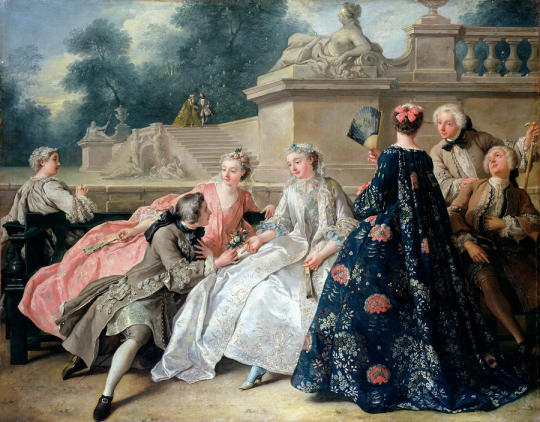
Jean-François de Troy, The Declaration of Love (1731)
All these competing ideals are exactly what set the Baroque and Rococo periods apart.
Let's start at the beginning - well, sort of - with Baroque.

Artemisia Gentileschi, Judith and Holofernes 1612-13
Throughout Europe Catholicism sees a decline in followers going into the 17th century, due to popularization of Marin Luther's Protestant reformation.
Protestantism came as a response to shady behavior within the Catholic Church, which had previously held unchallenged cultural and political power. This 'divine' power within the Church attracted wealth, and wealthy people looking to buy in.

I cannot stress enough how motivated by money the Catholic Church was at this time. Many Popes like Leo X actually sold physical certificates called 'indulgences' which were essentially Fast-passes through Purgatory, should its keeper die before confessing their sins in penance.
Through generous donations to the Catholic Church, one could actually buy themselves a ticket into heaven, circa ~ 1550.
This wasn't great optics to German monk, and founder of Protestantism, Martin Luther. And many people agreed, causing a novel decline in Catholicism. The Roman Catholic Church desperately needed a rebrand.

Caravaggio [?] , The Crowning with Thorns, 1603
Baroque paints Catholicism in a more virtuous, penitent, moody, and modest light. Visual elements like high contrast light and shadows, mostly religious imagery, "normal" looking figures that no longer strive to be the Renaissance's perfect man, nor Rococo's dashing picture of youth and indulgence, they look like us.
It's hard to say if the Baroque art movement really saved the Church from losing followers, but it did spark a global popularization of Baroque and is responsible for subsequent movements in fine art and architecture across the world!
ie. the global Baroque, Rococo, heavy influences on the Dutch golden age of painting.
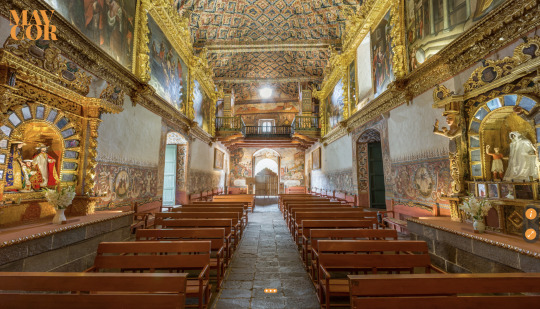
Church of St. Peter of Andahuaylillas - Peru, 1620s
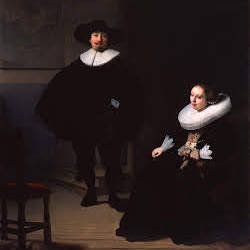

Rembrant, Lady and Gentleman in Black and Christ in the Storm on the Sea of Galilee, 1633, Dutch [missing from ISG Museum since 1990]

Jean-Honoré Fragonard, The Progress of Love: Love Letters, 1771-72, French
In the century to follow, Baroque artwork would become a status symbol in itself, along with its pious and devout lifestyle.
French aristocrats and artists like Fragonard coming into the 18th century rejected this ideology, along with King Louis XIV's frugal, somewhat Baroque style of ruling. Rococo takes clear visual elements of Baroque and applies them to a generally more frivolous, lighthearted, romantic subject matter, with clear emphasis on material wealth.
Wealth was shown and represented in excess, lifestyles full of lush scenery and architecture like Versailles. Material goods and conspicuous consumption ruled the aristocratic nobility (art buying community) at the time.
In the Rococo period once again, in Renaissance fashion, art patrons are shifting toward a search for aesthetic perfection, beauty, and divinity in humans and on earth.
A harsh contrast from a hundred years prior, in the midsts of Baroque's influence of frugality, devotion to faith, and denouncement of worldly comforts. This shift could have many catalysts, including the continuing spread of Protestant religions, or the rebellion against a previously strict, sometimes oppressive, religious church-state under the reign of Louis XIV.
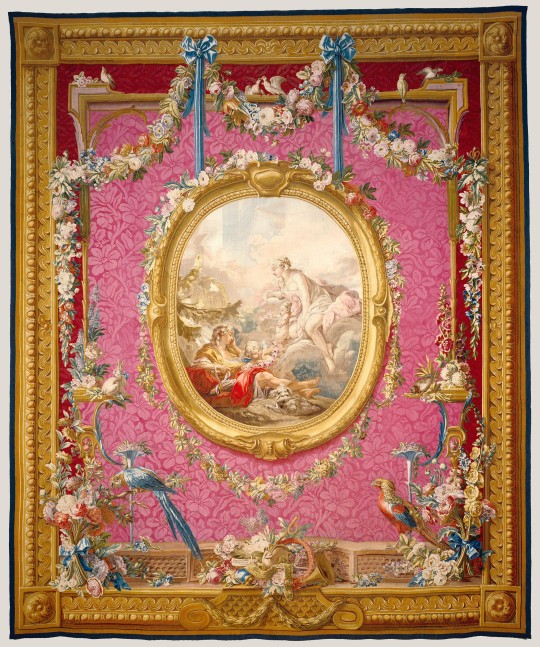
Tapestry L'Aurore et Céphale, from Les Tentures de François Boucher Series, Painted by Francois Boucher, 1776-77, French
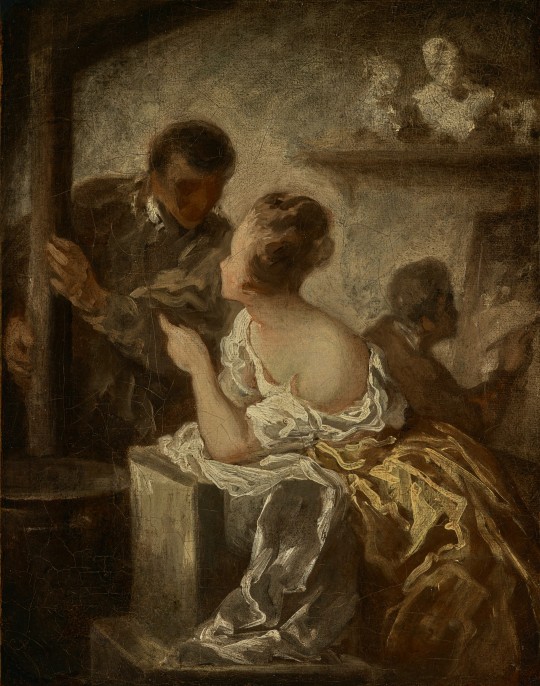
The Studio, Honoré Daumier, 1870, French
Ultimately, today the Rococo period is iconic in reference to the French Revolution.
Similarly to Rococo's start, as a rebellion against a meek and mild social norm, Rococo's end is tied to the death of the French noble class; at the hands of French citizens who were facing the consequences (famine, poverty, poor living conditions) of the French Nobility's over-indulgent, expensive lifestyle.
I can only assume that after the torches, pitchforks, and guillotining of the French Monarchy, Rococo's frills and embellishments probably seemed pretty... cringe.

Portrait of the Marquise de Pompadour by Maurice Quentin de La Tour, 1755 (Rococo)
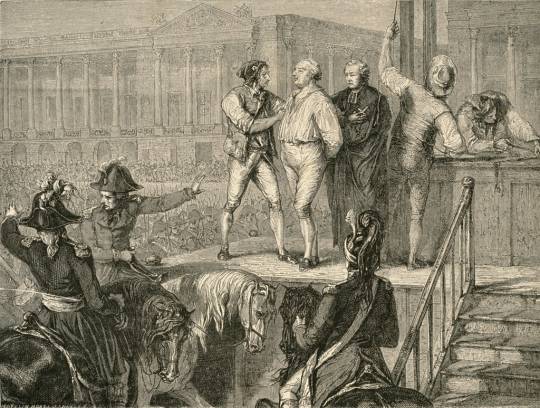
The Execution of Louis XVI by H. de la Charlerie, 1793 (Neo-classical)

The Death of Marat, Jacques-Louis David, 1793 (Neo-classical)
#art history#art#neo classical#baroque#global baroque#18th century art#17th century art#rococo#french revolution#renaissance#1800s#1700s#1700s fashion#1800s fashion#17th century#18th century#isabella stewart gardner museum#art theft#stolen art#classical art#classical paintings#architecture#religious art#religious architecture
8 notes
·
View notes
Text



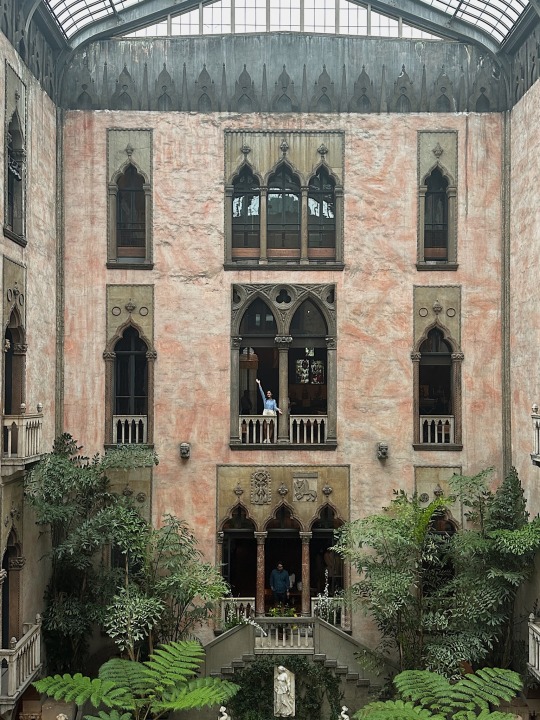
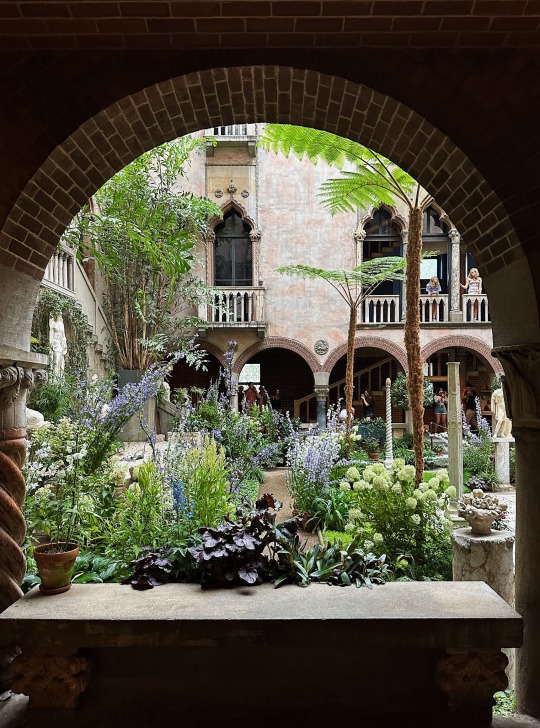

Isabella Stewart Gardner Museum, home of the biggest known art theft in history.
#art theft#art#green aesthetic#greenhouse#vsco#vscocam#iphonography#travelblr#Boston#massachusetts#architektura#architecture#sculpture
1K notes
·
View notes
Note
thank you for putting me onto Bushisms. Do you recommend any other wikipedia pages good for kicking off a wikihole
excellent question tysm
brocken spectre / crepuscular animal
the bible & violence / the bible & humor
teenage tragedy song / murder ballads
bildungsroman / road movie / flood myth lovecraftian horror / roman a clef
isabella stewart gardner museum theft (see also: art theft)
homosexuality in japan
the epic of gilgamesh
conspiracy theory (see also: denver international airport)
list of people who disappeared
okay have fun!
53 notes
·
View notes
Text
The Isabella Stewart Gardner museum theft is absolutely wiiild. And still unsolved today, 35 years later
20 notes
·
View notes
Text
March 18, it'll be 35 years since those piece of art disappeared.
Let's all hope they are still around, not destroyed, and that, one day, we will be able to see them again.
need to compulsively blog emmrich or i’ll fall into the weird sadness pit that is the 35 year anniversary of the isabella stewart gardner museum heist









19 notes
·
View notes
Note
There's literally no such thing as "art theft" lmao. You're a reactionary.
The 1990 heist of the Isabella Stewart Gardner Museum in Boston resulted in the theft of estimated to be around $600million making it the highest valued art theft in history and one of if not the largest unsolved heists in modern history
87 notes
·
View notes
Text
So, I just found @interviewwiththevampireart, and it inspired me to look for this portrait in the dining room of the Dubai apartment (screenshot from 1.02):

It took about two minutes of Googling to find out that it's Rembrandt's Christ in the Storm on the Sea of Galilee, painted in 1633.

This is from the Wikipedia entry on the painting:
Christ in the Storm on the Sea of Galilee is a 1633 oil-on-canvas painting by the Dutch Golden Age painter Rembrandt van Rijn. It is classified as a history painting and is among the largest and earliest of Rembrandt's works. It was purchased by Bernard Berenson for Isabella Stewart Gardner in 1869 and was displayed at the Isabella Stewart Gardner Museum in Boston before its theft in 1990; it remains missing.
This is such a small detail, but it just proves how amazing the set design is in this show. Loumand have one of the most famous missing pieces of art in America just hanging in their dining room. I'm sure other people have noticed this before, but I thought it was so cool, and I wanted to share!
21 notes
·
View notes
Note
TRICK OR TREATT 🎃
7 notes
·
View notes
Text


National Treasures
Poppy Flowers (also known as Vase And Flowers and Vase with Viscaria) is a painting by Vincent van Gogh with an estimated value of US$55 million [1] which was stolen from Cairo's Mohamed Mahmoud Khalil Museum twice; first in 1977 (and recovered after a decade), then again in August 2010 and has yet to be found
Christ in the Storm on the Sea of Galilee is a 1633 oil-on-canvas painting by the Dutch Golden Age painter Rembrandt van Rijn. It was purchased by Bernard Berenson for Isabella Stewart Gardner in 1869 and was displayed at the Isabella Stewart Gardner Museum in Boston before its theft in 1990; it remains missing
41 notes
·
View notes
Text
The Art of the Double-Cross

Pairing: Marcus Pike x f!reader
Rating: T (allusions to spice, but that’s it)
Word Count: 3200
Warnings: Descriptions of minor peril, enemies to lovers, allusions to violence but no actual violence, I’m choosing not to say much about this because it gives the whole game away. More notes at the bottom.
Summary: “People have been trying to solve the Isabella Stewart Gardner museum theft for decades,” she says quietly, putting her hand on his arm. “Decades, and yet you find the one detail everyone else had overlooked.”
A/N: Gif is Agent Greer because I can't stop thinking about this as "on the job" Marcus Pike lol
Masterlist
Agent Pike moves silently through the abandoned factory, deftly avoiding the pieces of broken glass that litter the floor underneath broken windows. Dust lies thick on every surface, filtering in and out of twin flashlight beams as they bounce slowly down the stale air of the hallway.
It appears as though not one soul has stepped foot in this building for decades.
Agent Pike knows better.
“Where do you think they’ll be?” a voice calls out beside him, the words quiet as thought their owner is afraid of disturbing the grave-like quality of the environment.
“Basement,” he answers at the same volume. “I’ll bet you anything there’s a hatch hidden somewhere.”
At the end of the hallway, the two investigators come to an old door with peeling paint.
“Locked,” his companion mutters as she tests the knob. “Agent, would you mind…?”
Pike nods. Drawing his sidearm as a precaution, he takes a small step backward for stability and then rams his foot into the door just above the lock.
It crashes open with a bang that makes both of them wince.
Peering into the darkness, it’s clear that the room is just as empty as the rest of the factory, so he re-holsters his gun and steps forward.
The woman next to him laughs breathlessly. “That worked well,” she quips.
“What can I say,” he chuckles quietly in return.
The two of them fan out in opposite directions, pacing the perimeter of the room, looking for some method of entry to the space they know is lurking below them.
“Anything?” she asks from the other side of the room.
Agent Pike casts his eyes over an old filing cabinet and down to the floor.
“Nothing,” he answers. “Wait…”
His flashlight lands on a large scuff mark on the ground beside the cabinet.
“What is it?” She crosses the room in an instant, standing beside him again as he examines the mark.
“Hold this.” He hands her the flashlight and moves the large metal object to the side with a grunt—it weighs a ton—but he hardly needs to move it six inches before his suspicion is confirmed: there’s a hidden crawlspace underneath.
“That’s a tight fit, Agent Pike,” his companion whispers after he maneuvers the filing cabinet away from the small opening.
“I think we’ll manage,” he responds with a wry smile.
He lies down on the floor, covering the front of his suit in dust, but he hardly cares—this is going to be the biggest discovery of the art world in a century. Peering down into the black abyss, he signs his flashlight around. It’s just a small room, just as musty and seemingly unused as the rest of the building.
“Clear,” he murmurs under his breath. “I’m going down.”
“Be careful, Agent Pike,” she warns, her eyes wide with trepidation.
“S’alright,” he replies cooly. “Nothing bad down there except for thirty years’ worth of cobwebs.”
He swings his legs over the side and, with a quick, calming breath, lowers himself into the darkness.
“A-Agent?” she calls out from above.
“All good,” he answers. “Need a hand down?”
Agent Pike watches as she carefully dangles her legs in the beam of his flashlight. She shifts, trying to lower herself down while maintaining her grip on her own torch. Suddenly, she slips, a frantic “Oh!” cutting through the silence as she falls through the opening and into his waiting arms.
“That was farther down than I expected,” she confesses. “Thought I was gonna break a leg there for a second.”
He looks deep into her eyes, their faces impossibly close—closer than they’ve ever been.
“Would I ever let anything happen to you?” he asks softly, a tender smile spreading across his face.
Smiling back, she shakes her head.
“No,” she whispers.
“No,” he agrees. “Now let’s go recover some stolen art, huh?”
Together, they turn, flashlights pointed toward the far side of the small room. And there, in the harsh light, is the most amazing sight Agent Pike has ever seen in all his years on the job.
His heart is pounding as he hastily takes inventory.
Vermeer. Three Rembrandts. Five Degas. Flinck. Manet. Chinese gu. French Imperial Eagle.
“It’s all here,” he whispers. If she notices how rough his voice is with emotion, she doesn’t mention it. “Every piece.”
“People have been trying to solve the Isabella Stewart Gardner museum theft for decades,” she says quietly, putting her hand on his arm. “Decades, and yet you find the one detail everyone else had overlooked. The one little detail that brought us here to this abandoned paper mill in the middle of nowhere, Texas.”
“Middle of nowhere?” Agent Pike teases. “This is my hometown. Why else do you think I recognized the residue on the footprint immediately?”
“They’ll be writing books about this moment, Agent,” she says reverently.
“Wow,” he breathes, not able to take his eyes off of the priceless collection for one moment. “Books, huh?”
“Unfortunately, they won’t be ending the way you envisioned. This is the end of the line, Pike.”
Suddenly frowning, he whirls around.
“What do you mean?”
Her face is a maelstrom of regret as she slowly draws her sidearm. “I’m sorry, Agent.”
“Wh-what are you doing?”
“I’m double crossing you.”
“What?”
“Y’know, I’m working with the uh… um… the bad guys.”
“…What?”
Completely and utterly bewildered, Marcus cocks his head to the side and scratches his head.
It’s such a comical sight that you start to laugh.
…Three Hours Earlier
“I wanna know…” you say teasingly, sloshing the amber liquid in your glass around in a circular motion as you stare at your boyfriend across the tabletop, “…what’s like, your craziest fantasy? Like the weirdest fucking thing.”
The drink buzzes pleasantly in your system, making your tongue loose and your motions languid.
It gives Marcus the giggles.
He looks back at you with a cheeky expression, raising his eyebrows saucily as he takes another sip of his drink. “Wouldn’t you like to know?” he says with a grin.
“‘S’why I asked,” you say indignantly. “Obviously.”
He laughs for a moment, then sets his drink down with a thoughtful look. “I don’t… I don’t know,” he begins. “I mean, I feel like you and I have… done just about everything,” he says, the tips of his ears turning pink as he talks. “We’re pretty adventurous, after all. Anything I would have considered to be a fantasy, we’ve already done.”
You smile back at him, hundreds of memories swirling through your head at his words—flashes of images containing some of the wildest, dirtiest, and best sex you’ve ever had in your life.
“That’s such a cop-out, though,” you pout, sticking out your lower lip. “There’s gotta be something. A daydream. A—A scene from a movie, anything.”
Marcus shrugs and holds out his hands. “I’ve got nothing,” he chuckles. “Well, nothing sexual, I suppose.”
The qualifying statement makes your ears perk up. You set your glass to the side and put your elbows on the table, your face resting in your hands as you lean forward and look expectantly at him. “Go on…”
“Oh—I just… No, there’s—haha—there’s nothing, I was—I don’t know why I said that.”
You lean further forward, almost halfway across the table, eyes boring into his with a challenging stare.
“Spill it,” you demand giddily.
Marcus’s face has gone from pink to beet red. Still chuckling, he breaks eye contact, staring down at his drink as he seemingly gathers his thoughts.
“I haven’t thought about this in ages,” he murmurs, shaking his head in amusement.
“Thought about what?”
With a heavy sigh, Marcus meets your eyes again. “Okay. So you know the uh, the Isabella Stewart Gardner Museum theft, right? Most famous art theft of all time?”
“You may have mentioned it,” you tease.
“No one’s ever found the art,” he says. “None of it. The trail is cold, now, but… I dunno, I just…”
“You’ve fantasized about being the one to recover it,” you offer.
“Silly, I know.” Marcus ducks his head.
“It’s not.”
You look at him—really look at him. You study his warm brown eyes, with the laugh lines that come from his near-constant smiles. His expression is open and earnest, his eyebrows upturned slightly as he takes in your sincere response. His hair, as always, is slightly unruly, even more so tonight after a couple of drinks.
How fucking cute is it that Marcus Pike’s ultimate fantasy is solving a world-famous art heist himself?
You tip back the last sip of your drink and set it down heavily on the table.
“Let’s do it,” you announce.
Marcus frowns in confusion. “Do what?”
Your smile is a sly one.
“We’re gonna re-enact your fantasy.”
Now:
“That doesn’t make any sense,” Marcus says, but his lips are starting to quirk upward in amusement.
You shrug. “Does it have to? This is all just pretend—why can’t I be the bad guy?”
“You’re supposed to be my love interest,” he counters.
“Why can’t I be both?”
“Isn’t the point of fantasy to eventually lean into the uh… romance bit of it?”
“What’s more romantic than a redemption arc?”
“How’s that gonna work, exactly?”
“I can’t tell you,” you say indignantly. “That’ll ruin the whole fucking story!”
“I thought this was my story,” Marcus teases.
“Just trust me on this,” you pout.
Marcus holds up his hands placatingly. “Fine, fine.”
You clear your throat dramatically.
“I’m afraid this is the end of the line, Agent Pike.”
He doesn’t miss how the gun quivers in her hands.
“After all this time,” he remarks softly, shaking his head in equal parts disappointment and heartbreak. “After all we’ve been through together, this is how it ends? Fine. But before you do it, I want you to tell me why.”
“Does it matter?” she asks.
“It matters to me.”
“Why?”
“You know why.”
At his words, a tear slips down her cheek. “I—I can’t. They… they said—”
“What did they say?” He can’t help the way his voice gentles at the sight of her crying.
“If I don’t go through with this, they—” she hiccups dramatically. “Well, I’d rather the entire place go up in flames, and me with it, than face that fate.”
“Don’t say that,” Agent Pike says firmly. “We can get you out of this, I can help you.”
More tears course down her cheeks as she shakes her head. “It’s too late for that.”
“Why?”
“The failsafe.”
He shakes his head, frowning. “I don’t understand.”
“There’s a reason I said I’d rather go up in flames,” she whispers.
It’s then that Agent Pike realizes he can smell the faintest tinge of smoke.
“I’m sorry,” she sniffles.
“Shit,” he mutters under his breath. He looks around the small basement, quickly jumping to action—grabbing the old desk and dragging it to the center of the room below the trapdoor and standing on it and peering into the room above them.
“It’s no use,” she says tearfully. “We’re trapped.”
“No. Don’t say that. Never say that. I’m not giving up.” He jumps down, coming face to face with her. Carefully, so carefully, he takes her face in his hands and lowers his forehead to gently rest against hers. “I said I’d never let anything happen to you, and I meant it.”
“Stubborn,” she laughs shakily.
“Always have been,” he agrees quietly.
“Agent—” she whispers.
“Don’t call me that,” he entreats softly. “Call me by my name.”
“I can’t.”
“You never have,” he says, wondering. “Why?”
“If I let myself… be so familiar, I—”
“You what?”
“I’d never be able to stop,” she says breathlessly.
“Say it,” he commands huskily. “If this is really the end of the line, you’ll say it for me.”
She’s already leaning closer, her eyes half-lidded as they finally give into the pull they’ve felt for so long.
“Marcus,” she breathes—reverently, lovingly, desperately.
It’s the last sound she makes before he presses his lips to hers.
It’s a fervent kiss, spurred on by years of yearning and the peril of their current predicament. His hands grab, clenching around her hips, holding her jaw roughly as he deepens the kiss. She meets him with equal ardor—her teeth nip his lower lip and he groans deep in his throat. Just before he truly begins to lose himself, however, he tears himself away.
“Stop,” he pleads with her. “Stop this. I’ve gotta get you out of here.”
“Marcus—” she starts, but he’s already striding across the room.
“Help me with these,” he orders briskly, grabbing as much of the art as he can carry, climbing back onto the desk, and shoving them through the trapdoor.
He’s not as careful as he’d usually be with the art—hell, he didn’t even take his archival gloves out of his front pocket—but this isn’t exactly what he’d call an ideal situation. Even still, if there’s a chance he can save the art and their lives, well, he’ll damn-well try.
She grabs the Chinese gu and hands it up to him. “You’re beyond crazy, you know that?” she says, shaking her head as he sets it gently on the floor above them.
“So I’ve been told,” he shrugs, jumping down to grab some more.
“It’s why I love you.”
Marcus stops, nearly dropping the Degas he’s carrying.
“Even if we don’t make it out,” she says, her voice wavering slightly, “I’ll have died happy knowing that I told you.”
Marcus squares his jaw, leveling her with an even stare.
“Tell me again when I get you out.”
The smoke is starting to make his eyes water, but he grits his teeth and grabs the last of the art and shoves it through the hatch. Standing on the desk, he extends his hand.
“Come on.”
She hesitates, staring up at him with wide eyes.
“Why are you saving me? I—I tried to kill you.”
Marcus’s eyes soften.
“You’ll have to wait until we’re outside for my answer,” he says with his characteristic wry smile.
Then he grabs her hand and pulls her up with him, not stopping until she’s able to grab the edges of the opening and pull herself up. Taking a brief breath to center himself, Marcus jumps up, just barely able to find purchase, and follows her.
The smoke is worse up here, making both of them cough. He can see flames licking up the door where they had entered, making it look as though all is lost.
“Oh, God,” she wails. “It’s too late.”
“Not yet, it’s not,” Marcus announces confidently. Pressing his hand to his ear, he clears his throat to dispel the smoke, and then speaks.
“Call in the calvary.”
Before she can ask him what he’s doing, he grabs her around the waist and pulls her away from the wall.
“I c-can’t breathe,” she says, panicked.
“It’s almost over,” Marcus says soothingly in her ear. He presses her against his chest, and waits.
He doesn’t have to wait for long before he hears it—the distinct rumble of engines coming from outside the factory. There’s a deafening crash and more dust and smoke fills the air as something smashes through the concrete brick.
She shrieks in surprise, burying her face into the crook of Marcus’s neck as he shields her from the falling debris.
When everything settles, all that the two of them can see is the massive combine tractor now sitting in the middle of the room.
“Wh… wha…” she stammers, too stunned for words.
“Told you this was my hometown,” Marcus reminds her with a grin. “I can’t come for a visit without stopping by the family farm, now can I?”
“Wait… wait—” you hold both of your hands up, forgetting to be in character for the moment. “When was this part of the story?”
“Well, you complicated things greatly by double-crossing me,” Marcus says seriously, “and I had to improvise.”
“With a combine tractor?”
Marcus shrugs. “Why not? My family does own a farm.”
“…Okay.”
“Anyway,” Marcus says pointedly. “We’ve got some art to save and some bad guys to arrest.”
She stares up at the giant tractor in awe. “I… I can’t believe it.”
“What can I say,” he says with a grin, “I always come prepared with a plan B.”
The tractor door opens, and an older man with greying hair, deeper laugh lines, but with a familiar set of warm, brown eyes emerges from the vehicle.
“When you told me you needed me to be ready to crash Bessie into the side of the old paper mill tonight, I thought you were crazy,” the old man remarks. “How did you know it was going to burn down?”
Marcus shoots his father a smile. “Had a hunch,” he says with a shrug, glancing down at the woman in his arms with a fond expression.
“Agent Pike—Marcus—you’re… you’re brilliant,” she breathes, staring up at him.
“Now, I believe plan A was recovering every piece of art that was stolen from the Isabella Stewart Gardner Museum in 1990,” Marcus says. “Do you mind…?”
“I hitched the trailer to the back just like you asked,” the older man says. “How about you an’ me carry this little makeshift museum back to the farm and alert the FBI.”
“Hang on,” Marcus says, gently grabbing her wrist to stop her from leaving his side. “First, we need to address plan C.”
“What’s plan C?” she asks.
“I owe you an answer from before,” he reminds her. “You asked why I saved you after you tried to kill me.”
A solitary tear rolls down her cheek. “I’m sorry,” she whispers.
“I know,” he says softly. “But I need you to know—I did it because I love you. I’ve always loved you.”
Her breath catches in her throat at the adoration in Marcus’s gaze.
“I love you too,” she says breathlessly.
Their lips meet for the second time that night—just as passionate, but far less urgent. He’s in no rush this time, after all. He explores her mouth, his tongue dancing with hers as he tilts his head and presses the length of his body against hers. She gasps softly when she feels his cock starting to stiffen.
“Wait!”
“H-whhuh?” Marcus stutters, appearing dazed.
“Is your dad still in the room?” you ask, raising one eyebrow skeptically.
“Oh! Uh… no,” he answers hastily. “No he, uh, he took the art and left already. So we’re alone,” he says, coming in for another kiss.
“Marcus,” you interrupt again.
He makes an impatient questioning noise, his lips still searching for yours.
“Isn’t the building still on fire?”
“Who’s fantasy is this, yours or mine?” he teases.
“I’m just pointing out the continuity errors.”
“We’ll make love as the factory burns around us,” he laughs, capturing your lips with a sweet kiss.
“Or we could just move this to the bedroom.”
Marcus’s eyes darken.
“Yeah,” he agrees huskily. “Yeah, let’s do that.”
You pout your lip coquettishly and stare up at him with exaggeratedly wide eyes.
“Lead the way, Agent Pike.”
**
OKAYYYYYY LOL so this absolute crack fic was based on this meme:

And @littlebirdsbookshelf and I decided that Marcus would ABSOLUTELY fantasize about solving the Isabella Stewart Gardner theft himself LMAOOOOOOOOOO
#marcus pike#marcus pike x you#marcus pike x reader#marcus pike x f!reader#the mentalist#pedro pascal
145 notes
·
View notes
Note
oomfie you're from the boston area right... i'm going on a trip there (and then to buffalo) next week and if you're willing to spare some hot tips they would be greatly appreciated... especially for like queer shows or clubs or whateva :0 only if you want to spare such info ofc!
omg yeah i got you!!
for queer places my fav is club cafe <3 good vibes generally and their food is LIT. cathedral station is a queer sports bar but it's really just a cool space all-around, and blend in dorchester is great too! be warned it's the last few weeks of this season of drag race so if you're out at a queer place on a friday night it'll be insane to get a spot
for more general things, take a walk through boston common bc it really is gorg! hit up the prudential center and there's restaurants that half rooftop access and i think (?) there's a place at the top where you can see the whole city it's gorgeous :)
faneuil hall/quincy market is def super touristy but the area around there has interesting historical buildings which i think is worth checking out!
boston also has some lit museums: i've been to the aquarium, the museum of science, and the museum of fine arts, and are all super fun! i've never been to the isabella stewart gardner museum but it's up next on my boston list bc a) it's beautiful but also b) it's home to the hightest-value museum art theft in history and they have the empty frames up on the wall which is kind of metal imo.
if you're into classical music i have friends singing at symphony hall in bach's b minor mass next week which if you haven't heard, it's sooooo good
the subways (aka the "t") is... not great but is convenient to get around the city. it runs until about 1am, sometimes almost 2 depending on if it's a weekend or if there's a game at the garden or not. but it's not too tricky to navigate, you're either going inbound or outbound and the lines are all colors. imo it's easier to understand than the mta in new york but i also grew up with it lol
i hope this was helpful & feel free to hit me up as it gets closer! i love boston and as much as massachusetts ppl get a bad rep for being rude it's very much that we're a people who are kind but not nice–any local will gladly help you on your way!
9 notes
·
View notes
Text
Is Stealing a Work of Art Ever Excusable? One Master Thief Claims Yes The world’s greatest living art thief is likely a 52-year-old Frenchman named Stéphane Breitwieser, who has stolen from some 200 museums, taking art worth an estimated total of $2 billion. While working on a book about him, I interviewed Breitwieser extensively, during which he discussed the details of dozens of his heists—and also expressed the brazen belief that his art crimes should be considered forgivable. But only his crimes. Breitwieser said that he didn’t even like being called an art thief, because all other art thieves seemed to be nothing more than art-hating thugs. This includes the most accomplished ones, like the two men who robbed Boston’s Isabella Stewart Gardner Museum on the night of St. Patrick’s Day, 1990. The Gardner thieves assaulted the pair of overnight guards, bound the guards’ eyes and mouths with duct tape, and handcuffed them to pipes in the basement. Then the Gardner robbers yanked down a magnificent Rembrandt seascape, and one of the men stuck a knife in it. Breitwieser can hardly bring himself to imagine it—the blade ripping along the edge of the work, paint flakes spraying, canvas threads ripping, until the masterpiece, released from its stretcher and frame, curled up as if in death throes. The thieves, whose $500 million crime remains unsolved, then moved on to another Rembrandt and did it again. “They’re barbarians,” said Breitwieser. Breitwieser, along with his girlfriend, Anne-Catherine Kleinklaus, who served as lookout on most of his thefts, never resorted to violence, or so much as the threat of violence. They stole from museums only during opening hours, using subtle diversionary tactics that permitted Breitwieser to make things disappear, magician-like, from walls or display cases, while carefully avoiding security cameras and alarm systems. The couple escaped by strolling out a museum’s front door, the artwork usually stashed beneath Breitwieser’s overcoat.
52 notes
·
View notes
Text
if they dont figure out who did the isabella stewart gardner museum theft before i die im coming back and haunting until they solve it
2 notes
·
View notes
Text

Rembrandt, Vermeer, Degas still Missing: (Fiction Based on a True Event) (A Neil Hammer Novel Book 1) Kindle Edition by Anthony Mays
Fast-paced cat & mouse read that at times is unclear who is the cat and who is the mouse. (Based on a true event} Special Agent Neil Hammer is assigned to an old FBI case titled: Operation Old Masters. The case stems from a historical theft on March 18, 1990, from the Isabella Stewart Gardner Museum in Boston in which multiple works of art were stolen. His assignment begins with the Boston mafia, believed to be at the core of the missing masters paintings valued at hundreds of millions of dollars.
Reese Summers, a freelance reporter, is hired by a Boston newspaper editor to look into the recent death of Joey Cardosi. Cardosi happened to be a long-time friend of Alfredo Marino, a mafiosi member believed to be involved with the heist. Intrigued by the puzzling crime in which no arrests or artwork has been recovered, she quickly immerses herself into the underbelly of the criminal world.
The two unlikely, hard-nosed, characters team up to tackle a cold case which has yet to be solved.
Grab YOUR Copy NOW: https://amzn.to/3TQjw3S
2 notes
·
View notes
Text
Events 3.18 (after 1930)
1937 – The New London School explosion in New London, Texas, kills 300 people, mostly children. 1937 – Spanish Civil War: Spanish Republican forces defeat the Italians at the Battle of Guadalajara. 1938 – Mexico creates Pemex by expropriating all foreign-owned oil reserves and facilities. 1940 – World War II: Adolf Hitler and Benito Mussolini meet at the Brenner Pass in the Alps and agree to form an alliance against France and the United Kingdom. 1942 – The War Relocation Authority is established in the United States to take Japanese Americans into custody. 1944 – Mount Vesuvius in Italy erupts, killing 26 people, causing thousands to flee their homes, and destroying dozens of Allied bombers. 1945 – 40th Infantry Division, spearheaded by the 185th US Infantry Regiment, landed unopposed in Tigbauan forcing the Japanese forces to surrender and General Macario Peralta and Gen. Gen. Eichelberger to declare the Liberation of Panay, Romblon and Guimaras. 1948 – Soviet consultants leave Yugoslavia in the first sign of the Tito–Stalin split. 1953 – An earthquake hits western Turkey, killing at least 1,070 people. 1959 – The Hawaii Admission Act is signed into law. 1962 – The Évian Accords end the Algerian War of Independence, which had begun in 1954. 1965 – Cosmonaut Alexei Leonov, leaving his spacecraft Voskhod 2 for 12 minutes, becomes the first person to walk in space. 1966 – United Arab Airlines Flight 749 crashes on approach to Cairo International Airport in Cairo, Egypt, killing 30 people. 1967 – The supertanker Torrey Canyon runs aground off the Cornish coast. 1968 – Gold standard: The U.S. Congress repeals the requirement for a gold reserve to back US currency. 1969 – The United States begins secretly bombing the Sihanouk Trail in Cambodia, used by communist forces to infiltrate South Vietnam. 1970 – Lon Nol ousts Prince Norodom Sihanouk of Cambodia. 1971 – Peru: A landslide crashes into Yanawayin Lake, killing 200 people at the mining camp of Chungar. 1974 – Güzel İstanbul, a nude sculpture by Gürdal Duyar in Istanbul is torn down in the middle of the night. 1980 – A Vostok-2M rocket at Plesetsk Cosmodrome Site 43 explodes during a fueling operation, killing 48 people. 1990 – Germans in the German Democratic Republic vote in the first democratic elections in the former communist dictatorship. 1990 – In the largest art theft in US history, 12 paintings, collectively worth around $500 million, are stolen from the Isabella Stewart Gardner Museum in Boston. 1994 – Bosnia's Bosniaks and Croats sign the Washington Agreement, ending war between the Croatian Republic of Herzeg-Bosnia and the Republic of Bosnia and Herzegovina, and establishing the Federation of Bosnia and Herzegovina. 1996 – A nightclub fire in Quezon City, Philippines kills 162 people. 1997 – The tail of a Russian Antonov An-24 charter plane breaks off while en route to Turkey, causing the plane to crash and killing all 50 people on board. 2014 – The parliaments of Russia and Crimea sign an accession treaty. 2015 – The Bardo National Museum in Tunisia is attacked by gunmen. Twenty-four people, almost all tourists, are killed, and at least 50 other people are wounded.
0 notes